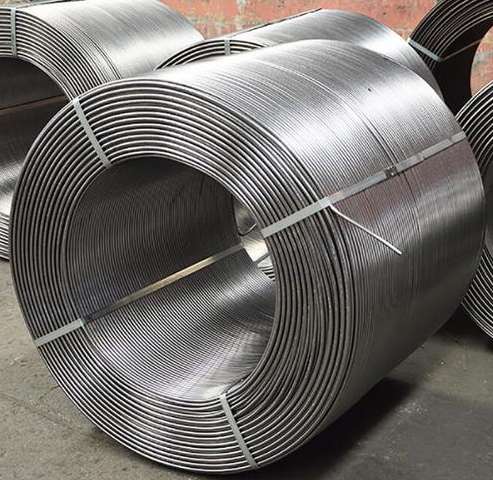
Calcium cored wire is a valuable additive in various industries, such as steelmaking and foundries, due to its ability to enhance the quality and performance of metals. To maximize the benefits of calcium cored wire, it is essential to employ optimization methods that improve its effectiveness and efficiency. This article explores six key optimization methods, including wire selection, wire feed control, application timing, temperature control, mixing practices, and post-treatment considerations.
Selecting the appropriate type and size of calcium cored wire is crucial for optimizing its performance. Consider the specific requirements of the application and the desired calcium content. Different wire compositions, such as pure calcium or calcium alloy, offer varying benefits. Additionally, selecting the right wire diameter ensures accurate dosing and promotes consistent wire feeding during the application process.
Proper wire feed control is essential to optimize the utilization of calcium cored wire. Implementing precise control mechanisms, such as wire feeders or automated systems, ensures consistent and uniform wire feeding. Regularly calibrate and adjust the wire feed speed and voltage settings based on the specific requirements of the process. Monitoring and maintaining an optimal wire feed control system minimize variations in wire consumption and improve overall efficiency.
The timing of calcium cored wire injection is crucial for achieving optimal results. Identify the ideal injection point during the steelmaking or casting process to ensure effective distribution of calcium in the molten metal. Timing considerations include factors such as bath temperature, alloy composition, and desired treatment goals. Optimizing the application timing enhances the absorption and reaction of calcium, resulting in improved metal quality.
Temperature control plays a significant role in optimizing the performance of calcium cored wire. Ensure that the molten metal temperature is within the recommended range to facilitate the proper reaction and dissolution of calcium. Monitor and control the temperature using thermocouples or infrared temperature sensors. Maintaining optimal temperature conditions enhances the efficiency and effectiveness of calcium cored wire treatment.
To achieve optimal results, ensure thorough and homogeneous distribution of calcium throughout the molten metal. Implement effective mixing practices, such as stirring or agitation techniques, to facilitate the dispersion of calcium and its interaction with impurities. Adequate mixing promotes uniform treatment and prevents localized variations in metal quality. Consider the appropriate mixing method based on the specific process and equipment available.

After the application of calcium cored wire, it is essential to evaluate the treatment results and make necessary adjustments. Monitor and analyze the impact of calcium treatment on metal quality parameters, such as inclusion content or mechanical properties. Based on the evaluation, make informed decisions regarding any modifications or refinements to the treatment process. Continuously optimizing post-treatment practices ensures consistent improvement in the quality and performance of metals.
By implementing the discussed optimization methods, individuals and industries can enhance the effectiveness and efficiency of calcium cored wire usage. Proper wire selection, wire feed control, application timing, temperature control, mixing practices, and post-treatment considerations contribute to the overall success of calcium treatment processes. Continuously striving for optimization allows for improved metal quality, increased production efficiency, and enhanced overall performance.

Write a Message